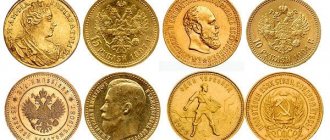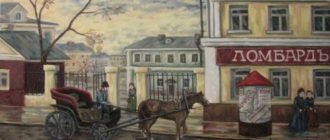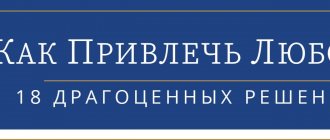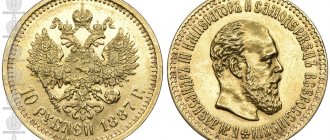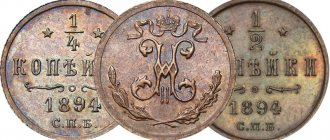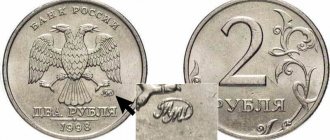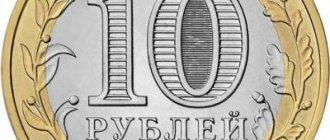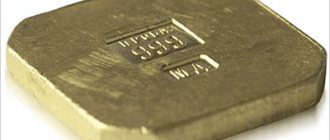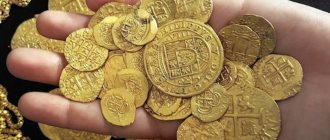We are glad to see you on the pages of our online store for replica coins, medals and other collectibles. The store's activities are aimed at supporting passionate people, helping them choose directions and selecting high-quality collectible material.
Some types of collecting require enormous expenses. Our goal is to offer quality replica collectibles to passionate people at affordable prices. In the category of sets and collections, you can purchase a ready-made collection or a set of coins in bulk at the best prices.
Sell 7 rub. 50 kopecks (1897)
7 1/2 rub.
How much can you sell 7.5 gold rubles for?
| Year Coins | Purchase price From | Purchase price Before |
| 1897 | 33 000 | 49 000 |
Price list date 2020-09-15 Purchase price is indicated in rubles
The appearance of a product with an unusual denomination was associated with monetary and economic reforms. For 1 year - 1897 - minting was carried out under the leadership of Apollo Grashof. The circulation was just over 5,000,000 pieces. Experts who professionally evaluate coins indicate that these items resemble the five-ruble coins of Alexander 2.
Characteristics:
- denomination – 7 rubles. 50 kopecks,
- weight – 6.45 grams (5.81 – pure gold),
- circulation - just over 5,000,000,
- diameter - 21.3 mm.
The items are considered rare because they were not minted during Soviet times. Be careful: Nikolaev coins from rare minting years were often counterfeited. find out how much Nicholas 2 gold is worth after a professional appraisal. Our specialists will conduct an assessment and then offer terms of purchase.
Moscow center, 2 minutes from the metro
+7(800)333-14-77
Instant cash or non-cash payment
Golden chervonets “Sower”
To get an idea of the reasons for the appearance of chervonets in the country of the Soviets, one should go back to the pre-revolutionary era. Since 1897, Nicholas II issued gold coins of 900 standard (15 and 7.5 rubles were minted only in the first year of the period of gold monometallism). The first gold tens of this type appeared in 1898 and did not yet bear the nickname “chervonets”. There was at least 7.74 grams of pure metal in ten. Coins were not only used in calculations, but also served as an excellent store of value.
After the revolution, the Council of People's Commissars faced the urgent task of stabilizing the financial system, destroyed by the civil war. “Our economic and financial policy is decisively oriented towards the restoration of the gold backing of money,” read the resolution of the 11th Congress of the RCP (b). The name of the monetary unit was chosen from “hryvnia”, “chervonets” and “rubles”. In colloquial speech, the word “rubles” meant a silver ruble, and “hryvnia” was the recent monetary unit of the UPR that ceased to exist. Of the three possible options, there was only one left.
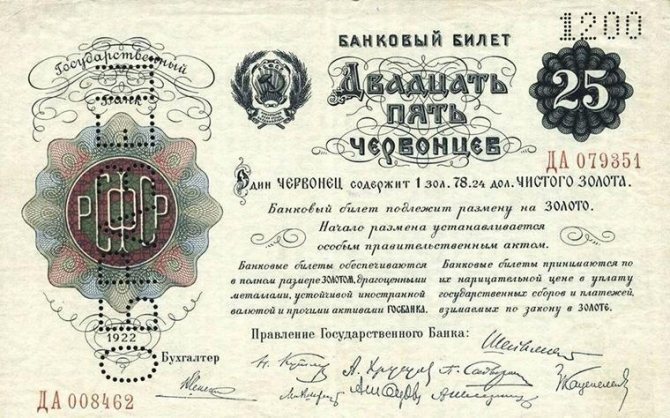
There has been no talk about minting gold coins yet. The State Bank received the right to issue banknotes in gold terms. The largest was 25 chervonets, which was equivalent to 193.5 grams of precious metal. Now the money turnover of the RSFSR was supported not only by Sovznaki, but also by a new currency backed by gold.
Is it profitable to sell 10 rubles? (1898-1911)?
Sale 10 rub.
Price of gold ten rubles
| Year Coins | Purchase price From | Purchase price Before |
| 1898 | 30 000 | 39 000 |
| 1899 | 30 000 | 39 000 |
| 1900 | 31 000 | 40 000 |
| 1901 | 31 000 | 40 000 |
| 1902 | 31 000 | 40 000 |
| 1903 | 31 000 | 40 000 |
| 1904 | 35 000 | 55 000 |
| 1906 | rarity | |
| 1909 | 37 000 | 65 000 |
| 1910 | 75 000 | 155 000 |
| 1911 | 31 000 | 39 000 |
Price list date 2020-09-15 The purchase price is indicated in rubles.
The table shows approximately the cost of ten rubles. It will be possible to say more specifically after an assessment by our specialist (for this we invite you to a store in Moscow). The cost is due to the fairly large number of products. For example, the circulation in 1900 was 5,372,000. In total, more than 60,000,000 pieces were issued during minting. But 10 rubles. 1910 is considered expensive. If you are interested in how much the 1898 coin costs, come to our store in Moscow.
Coin characteristics:
- diameter – 22.5 mm,
- weight – 8.6 grams (7.74 of which are pure gold).
Compared to the “imperial”, the ten-ruble coins have “lost weight”. This is due to the difficult economic and political situation.
You get up to 80% of the real market price
+7(800)333-14-77
The office is under guard. Petrovka 38 nearby
Review 15 rub. last emperor?
Fig 1. Sell Semi-Imperial of Nicholas II
Sell 15 rub. in Moscow
| Year Coins | Purchase price From | Purchase price Before |
| 1897 | 42 000 | 65 000 |
Price tag date 2020-09-15 The purchase price is indicated in rubles.
It is another “atypical” coin that appeared in connection with the monetary reform. In 1897, more than 12 million pieces were minted, in 1899 - almost 2 times more (27 million). But in 1906, only 10 pieces were produced.
Characteristics:
- coinage – “AG” (Apollo Grashof),
- diameter – 24.6 mm,
- weight – 12.9 grams (11.61 – pure gold).
Depending on the obverse stamp, there are 2 varieties: under the neck trim OSS or SS. If you need to sell gold 15 rubles. , contact our store in Moscow. It is known that there were trial denominations of 15, 10 and 5 rubles. There are also so-called “Rus”, which never came into circulation.
Free call within Russia for consultation
+7(800)333-14-77
We buy expensive investment coins
Types of golden chervonets of tsarist times
In 1701, Peter I resumed the production of gold coins as banknotes. They were intended primarily for foreign trade.
The tradition of issuing royal gold chervonets was subsequently adhered to by all Russian monarchs without exception. However, Russia began to mine its own gold only closer to the second half of the 18th century, so until the Witte reform in 1895, silver was the basis for commodity-money payments. And royal gold coins were minted in small quantities.
Traditionally, the royal profile was located on the obverse of the chervonets, and the state emblem was located on the reverse.
Designation of the degree of rarity of coins according to the Bitkin catalog:
- R – quite rare, 50-100 pieces;
- R1 – rare, 20-49 pieces;
- R2 – very rare, 10-19 pieces;
- R3 – very rare, 4-9 pieces;
- R4 – the rarest, 2-3 pieces;
- Un is unique, the only copy.
Peter I
Starting from 1701, gold money was issued almost annually in relatively small editions from several thousand to several tens of thousands of pieces. Tsar Peter's coins were minted in denominations of 1 chervonets and 2 chervonets until 1716 from precious metal of 969-980 standard. In terms of weight, they were brought into line with the European ducat then in use.

The issue was carried out at the Red and Kadash mints. The weight of the samples is 3.47 and 6.94 g, respectively, their diameter is 23-24 mm. Since 1718, the royal gold chervonets have been known as 2 rubles, made of 781 standard metal weighing 4.1 grams.
All copies from the time of Peter I are classified as very rare, their price skyrockets.
They were made using artisanal methods; there are a great many varieties of coins, even within the same circulation. Designation according to Bitkin’s catalog – R1-Un. Price from 50 thousand to 9 million.
Peter II
Under Peter II, from 1718 to 1728, low-grade two-ruble coins were minted. And only in 1729 were full-fledged royal chervonets issued with a circulation of 17 thousand pieces. The gold ones were of 981st standard. The mass of the object is 3.47 g, the diameter is 2 cm. Twice more, in 1727-28, gold coins of two-ruble denomination were minted with a circulation of 9,397 copies, 781-carat gold. Weight – 4.1 g, diameter – 2 cm. Designation according to Bitkin’s catalog: R1, R3. Price from 0.5 to 6.8 million.
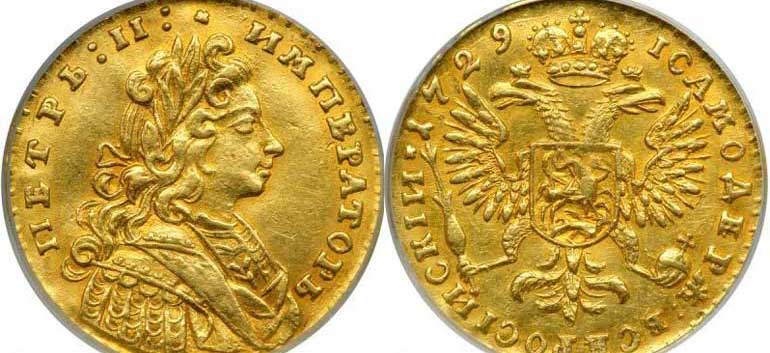
Anna Ioannovna
Under Empress Anna Ioannovna, gold chervonets were minted from 968-carat metal. Three circulations are known - in 1730 (8764 pieces), 1738 (4002 pieces) and 1739 (65,953 pieces) at the Kadashevsky and St. Petersburg courtyards. The coins weigh 3.47 grams, diameter – 2 cm. Bitkin: R2, R4.
Price 0.28–1.3 million in national currency.
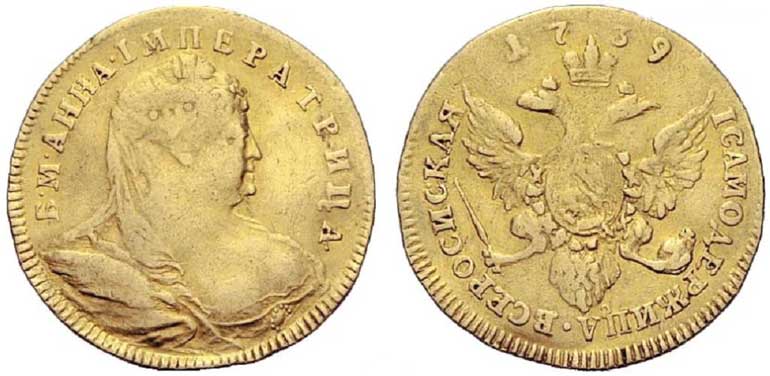
Elizaveta Petrovna
Under Elizabeth, royal gold coins worth 1 chervonets were minted from 1742 to 1757 from 968-carat gold, weighing 3.47 grams, with a diameter of 20-23 mm. Circulations ranged from 489 to 18,794 pieces. Bitkin: R2-R4. In 1749 and 1751, commemorative double chervonets were also issued with a circulation of 600 and 3360 copies, respectively. Designation according to Bitkin’s catalog – R1-R3.
The production of royal ruble coins began in 1755, denominations: half, 1, 2, 5 half-imperials and 10 imperials from 917-carat alloy. Gold coins were issued by the St. Petersburg and Moscow mints. They weighed at the rate of 1 ruble. – 1.6 grams. Circulation ranges from 5-50 thousand copies, the larger the denomination, the smaller the circulation of the issue. Bitkin: R-R3.
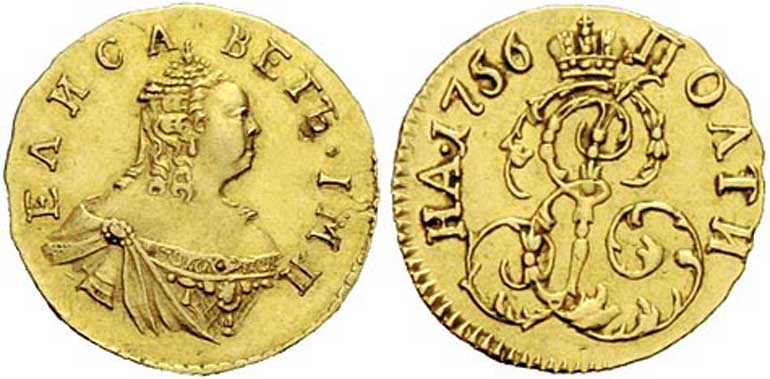
The price of royal coins of the Elizabethan era ranges from 30 thousand to 12.75 million.
Peter III
During the reign of Peter III, the issue of royal gold money was made only once - in 1762. Money was minted in denominations of 5, 10 rubles and chervonets. Gold alloy samples – 917 and 978 for chervonets. Circulations: 9482, 25,876 and 10,042 pieces respectively. The weight of chervonets was 3.47 grams, ruble denominations were 8.28 and 16.57 g. Mints - Moscow and St. Petersburg. Designation according to Bitkin's catalog: R1-R2. The price of copies now ranges from 1 to 3.5 million.
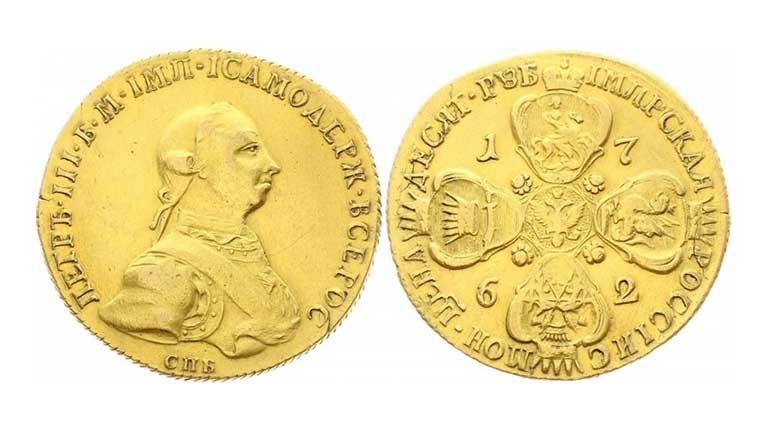
Catherine II
During the reign of Catherine II, in 1762, the weight of the royal five- and ten-ruble coins was forced to be reduced in order to bring them into line with silver banknotes in terms of metal value. At that time, the price of gold relative to silver was 1:15. Gold ones became lighter by about 20%. Their weight was 6.54 and 13.09 grams. The fineness of the metal alloy is 917.
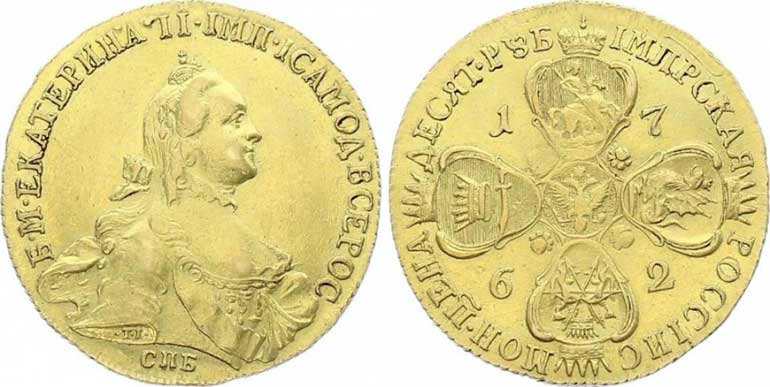
In total, during the years of Catherine’s reign, 1,075,753 ten-ruble imperials and 927,378 five-ruble half-imperials were made. Production took place at the Moscow and St. Petersburg courtyards. Designation according to Bitkin: R-R3.
Expert opinion
Alexander Ivanovich
Private collector with 4500+ coins and bonds in his personal collection. Knows the value of each of them today.
The minting of royal chervonets was significantly reduced due to their unprofitability. In 1763, 50 thousand copies of them were produced, in 1766 - 28,334 pieces. and in 1796 – 39,981 pieces. made of 978 gold. All chervonets were issued by the St. Petersburg Mint, Bitkin: R-R1.
Paul I
Having ascended the throne, Paul I began to change the appearance of money. According to historians, the emperor was embarrassed by his appearance, so the motto of the knightly order of the Templars was placed on the obverse instead of the royal profile. The reverse became the obverse, but the traditional eagle was soon replaced. Instead, they began to mint an ornament in the form of four “Ps”.
The composition of gold has also changed - for the production of royal 5 and 10 rubles. We used a purer gold alloy, 986 standard. In total, from 1796 to 1801, the following were issued: half-imperials - 510,880, weighing 6.08 grams, and chervonets - 162,220, weight in grams - 3.49. The issue was carried out by the Bank and St. Petersburg mints. Bitkin R-R4, price reaches 5 million.
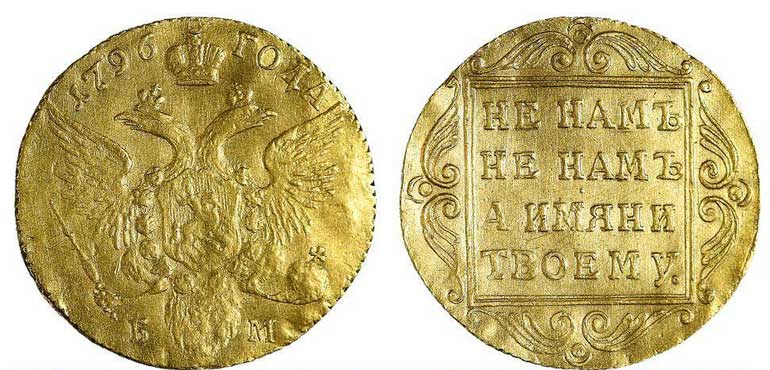
Alexandra I
Under Alexander I, royal imperials and semi-imperials were minted in the periods from 1802 to 1806 and from 1817 to 1831. The design has undergone changes again. The obverse was decorated with 4 shields, on the reverse there is the inscription “state Russian coin”. Later, in 1817, the shields were replaced with a new coat of arms - an eagle with lowered wings. Gold 917 standard, weight - 6.54 and 12.17 g. The total circulation was: 5 rubles. – 4,555,283 pcs., 10 rub. – 201,462 pcs. Bitkin R-R4, price from 20 thousand to 5 million.
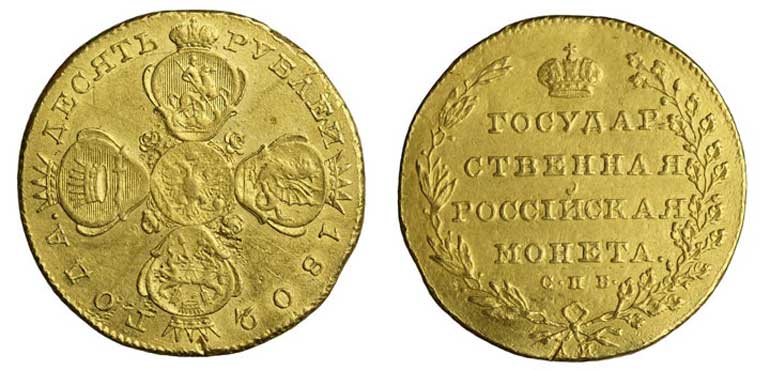
Alexandra III
Alexander III was crowned in 1881. He revived the minting of the obverse and reverse of the royal gold in the traditional design, with a profile and coat of arms. From 1881 to 1886 inclusive, banknotes in denominations of 3 and 5 rubles were minted. made of 917 standard metal. Since 1987, instead of the three-ruble coin, the issue of the imperial began, but the gold standard of the remaining two denominations was reduced to 900.
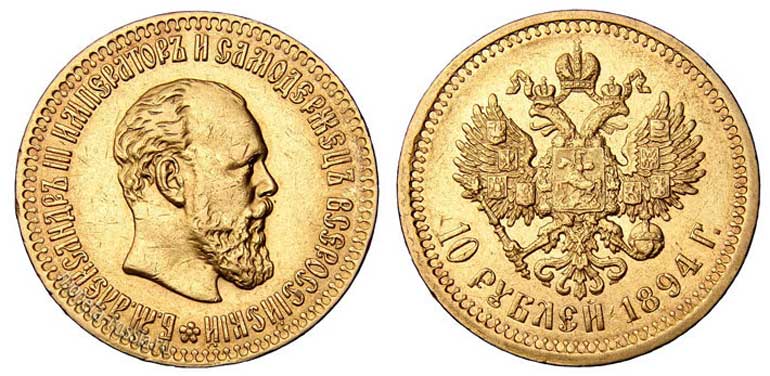
During the 13 years of the sovereign's reign, the following were minted: 3 rubles. weighing 3.93 g - 124,037 pcs., 5 rubles. weighing 6.45 g – 31 019 115 pcs., 10 r. weighing 12.9 g - 1,424,654 copies. Depending on individual characteristics and the degree of preservation, the price for them ranges from 16 thousand to 4.3 million. Designation according to the Bitkin catalog: from standard (not rare) to R4.
Nicholas II
The reign of Emperor Nicholas II was marked by the transfer of the monetary system to the gold standard and the appearance of several new denominations of chervonets: 7.5 and 15 rubles, as well as the largest coins in the entire history of tsarist Russia - 2.5 imperial and 37.5 rubles, or 100 francs True, these denominations were classified as donative (gift) signs. Very few of them were minted - 476 and 235 copies. The price for such items is 3–18 million rubles.
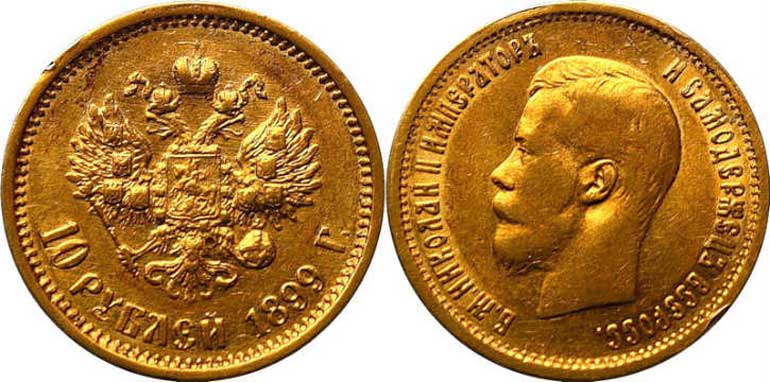
Gold purity – 900, manufacturer – St. Petersburg Mint. Over the entire period of his reign, the issue of gold chervonets amounted to: 5 rubles - more than 112 million pieces (more accurate information is not available due to the loss of data for 1909), 7.5 rubles. – 16,829,000 pieces, 15 rubles – 11,900,033 pieces. The price ranges from 3 thousand to 5.8 million for individual copies.
Cost 10 marks for Finland
Fig 1. Photo of 10 stamps
How much can you sell 10 stamps for in Moscow?
| Year Coins | Purchase price From | Purchase price Before |
| 1904 | 45 000 | 120 000 |
| 1905 | 115 000 | 225 000 |
| 1913 | 18 500 | 28 000 |
Price list date 2020-09-15 The purchase price is indicated in rubles.
10 stamps for Finland are of interest to numismatists. If you want to sell gold 10 marks, please contact the store in Moscow. Under Nicholas II, coins were minted only in 1904 and 1905. The copies are considered rare: in 1904, only a little more than 100 thousand appeared, and in 1905 - almost 43 thousand pieces. We also buy such items in our store. The 10 stamps for Finland have the following features:
- 900 gold standard,
- 3.23 grams of weight,
- 19.1 mm in diameter.
Chervonets “Sower” 1923
It turned out that the tsarist gold tens still enjoy great trust among the population, who prefer to keep their savings not in banknotes that were compromised during the Civil War, but in metal. Therefore, after the first issue of paper chervonets, a decision was made to provide their coin counterpart. The royal ten was taken as a basis (900 standard, 7.74 grams of pure metal). The obverse bears the coat of arms of the RSFSR. Through the efforts of the medalist of the Petrograd Mint A.F. Vasyutinsky, the reverse was decorated with the image of a peasant sower.
The model for the bas-relief was the famous bust sculpture of I.D. Shadra “The Sower” (Tretyakov Gallery). Shadr’s work turned out to be closely connected with the life of the Soviet country. The compositions “Peasant”, “Red Army Soldier”, “Worker” were used in the design of standard issues of postage stamps. And based on the famous “Girl with an Oar,” they immediately imagine the park sculpture of the USSR of the pre-war period.
The first gold chervonets came out from the stamp pair on August 27, 1923. For the period 1923-1924. According to documents, the Petrograd Mint issued 2,751,300 coins. Other sources indicate that only 100,000 copies of the Sowers were minted. The confusion is due to the fact that most of the circulation was subsequently melted down to produce analogues of the five- and ten-ruble coins of Nicholas II . Since, along with the “Sowers,” gold coins from the tsarist era continued to circulate in the domestic market, dozens of Nicholas II also began to be called “chervonets.”
The transition to issuing banknotes no longer from the RSFSR, but from the USSR, raised the question of changing the coat of arms on the obverse. There are samples with the date “1925” and the coat of arms of the USSR. None of the five known examples are present on the numismatic market. Two copies are kept in the Pushkin Museum. Three more coins are on display at the Goznak Museum. Since the main purpose of the gold issue was international settlements, and not domestic turnover, the need for the issue disappeared. The means of payment have changed in the world market. Now gold bullion and stable currencies (US dollar, British pound sterling and Swiss franc) dominated there.
Sell 20 stamps for Finland
20 Finnish marks
At what price can you sell 20 stamps?
| Year Coins | Purchase price From | Purchase price Before |
| 1903 | 25 000 | 35 000 |
| 1904 | 25 000 | 35 000 |
| 1910 | ||
| 1911 | 25 000 | 35 000 |
| 1912 | rarity | |
| 1913 | 25 000 | 35 000 |
Price list date 2020-09-15 Purchase price is indicated in rubles.
20 stamps were minted in 1903 and 1904. Circulations are 112,000 and slightly more than 188,000, respectively. Expensive items from 1904 and 1905. Place of minting: Helsingfors Mint. 20 stamps are made of the same material, but their weight is almost 2 times greater (6.45 grams), and their diameter is 21.3 mm.
